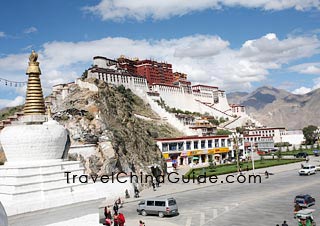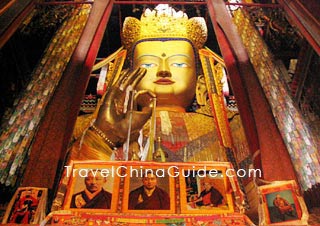Home / City Guide /
Tibet Travel Guide
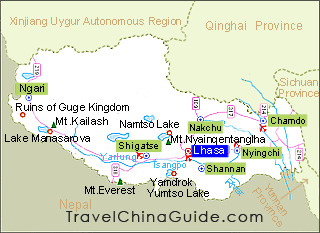 Click to enlarge the above map |
Tibet Facts:
Abbreviation: Zang
Admin. Type: Autonomous Region
Capital: Lhasa
Average Altitude: Over 4,000 meters (13,123 feet)
Location: 26°50' to 36°53' N, 78°25' to 99°06' E
Area: 1,228,400 km² (474,288 mi²)
Population (2019): 3,505,600
Major Cities
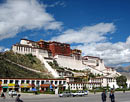 Potala Palace
Potala Palace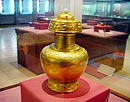 Tibet Museum
Tibet Museum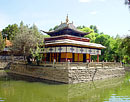 Norbulingka
Norbulingka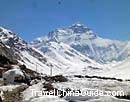 Mount Everest
Mount Everest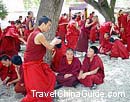 Sera Monastery
Sera Monastery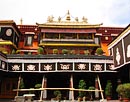 Jokhang
Jokhang
Temple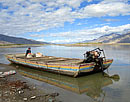 Yarlong
Yarlong
Tsangpo River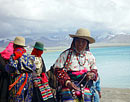 Heavenly Lake
Heavenly Lake
Namtso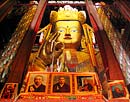 Tashilhunpo
Tashilhunpo
Monastery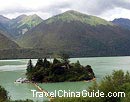 Pagsum
Pagsum
Lake
See more about Top 10 Things to Do in Tibet
Brief Introduction
Tibet enchants tourists from China and abroad with its landscape, religious traditions, culture, and its unsolved mysteries. At any mention of this land, the images of snowy mountains, mirror-like lakes, Potala Palace and Buddhist disciples immediately come to mind.
Tibet Autonomous Region (TAR) occupies one eighth of the China’s territory. Due to its high altitude, it is often called the 'Roof of the World' and the 'Third Pole of the Earth'. It boasts the world's highest peak, the splendid Mount Everest, and the Tibetan Plateau, where the Yangtze River and Yellow River both begin.
History and Religion
Language and Culture
See more about People & Life, Festivals.
Travel Restrictions
A travel permit is required for every foreign visitor. The only way to obtain a permit is to book a tour package with an authorized travel agency in China, which can help apply for the Travel Permit through the local tourism bureau. No agency can provide "permit-only" service, and overseas tourists must book their tours with a private vehicle, driver and tour guide. Citizens of all nationalities can apply for the permit.
Transportation
1. High Altitude: The Tibetan Plateau’s elevation can reach about 2 miles (3,000 meters) above sea level. As a result, people will be exposed to stronger ultraviolet radiation, increasing the risk of sunburn. The high elevation also means that the air is thinner, which can result in altitude sickness in those who are not acclimatized to less oxygen. Travelers are strongly advised to bring sunscreen and medication for altitude sickness.
2. Extreme Weather: The extreme climate makes Tibet one of the world’s harshest places to live. Although its summers are cool, winters are viciously cold, and the differences between daytime and nighttime temperatures can be vast. Visitors are strongly advised to prepare appropriate clothing according to the season they are traveling in. Summer and autumn, from June to October, are considered to be the best times to visit.
3. Religious Etiquettes and Taboos: Tashi Delek is a common greeting phrase, which means “Good Luck”. And presenting a Hada or Khata, a type of silk scarf to local people is also regarded as a practice to show respect, give blessings, and hospitality. Travelers are also advised to observe local taboos when visiting monasteries. Spitting, talking loudly, as well as touching, walking over, and sitting on sacred objects are considered taboos. According to the Buddhist custom, one must always walk clockwise around shrines, stupas, Mani stones and prayer wheels or risk bad luck.
- Potala Palace, Lhasa
- Sera Monastery
 4-Day Private Lhasa Package from $559
4-Day Private Lhasa Package from $559 - Mount Everest
- Last updated on Jun. 26, 2023 by Brenda Lian -
Questions & Answers on Tibet Travel
Asked by Elvis from USA | Apr. 28, 2023 03:13 Reply
Reply
 Reply
ReplyTibet visa from Kathmandu or from home-country?
Please suggest tibet visa from Nepal(kathmadu) as we are plan to visit Nepal and Tibet both. or can travel first from Tibet and then Nepal. Could you explain the procedures and supported documents to get Tibet visa?
Answers (1)
Answered by Andrew | May. 03, 2023 23:11 0
0 0
0 Reply
Reply
 0
0 0
0 Reply
ReplyIf you want to travel to Tibet, you need to apply for a Chinese visa first and then foreigners need to apply for a Tibet Travel Permit. That means you cannot travel to Tibet on your own but you have book a Tibet tour with a qualified tour agency. You can contact TravelChinaGuide to complete the procedure and generally it usually issues about 15 days prior to your entry to Tibet.
Generally, the documents include photos or copies of your passport, visa and other related information required by travel agency.
Generally, the documents include photos or copies of your passport, visa and other related information required by travel agency.
Asked by Sylvia from AUSTRALIA | Apr. 07, 2023 19:16 Reply
Reply
 Reply
Replypermitted mode of transport in Tibet
I am starting a world tour on a recumbent quad I bought in China. I will start in China and I would like to go to Tibet and go on to Nepal. Is it allowed to use a recumbent quad to enter and exit Tibet at the Nepal border? Do I need a special permit in addition to the usuel permit to enter Tibet. I am an Australian citizen. I have visited China every year since 2007 until the Covid pandemic.
Answers (1)
Answered by Nina | Apr. 10, 2023 19:54 0
0 0
0 Reply
Reply
 0
0 0
0 Reply
ReplyAs I know, foreigners are not allowed to travel to and around in Tibet on their own. In other words, they must join a tour organized by qualified agency. In the case, you are advised to consult your agency if they can meet your travel needs.
Asked by rosemai from CANADA | Jul. 23, 2021 03:33 Reply
Reply
 Reply
Replyam i going to find my own place to live this year ?
i am looking to buy a house this year is it going to happen ?
Answers (1)
Answered by Iris | Jul. 25, 2021 20:08 0
0 0
0 Reply
Reply
 0
0 0
0 Reply
ReplyIf you have enough money, you can buy a property this year.
Asked by LILLIEHO88 | Jan. 06, 2020 23:22 Reply
Reply
 Reply
ReplyLhasa Railway Station
I am a solo traveler planning to travel on the Ningxi-Lhasa Express. I understand a foreign solo traveler is not allowed to enter Tibet unless joining a tour agency which I do not intend to do.
If on arriving Lhasa from Ningxi, I plan to board the soonest train to Qinghai without leaving Tibet Railway Station. In other words, it is form of TRANSIT. Please advise and give full details. Thank you.
If on arriving Lhasa from Ningxi, I plan to board the soonest train to Qinghai without leaving Tibet Railway Station. In other words, it is form of TRANSIT. Please advise and give full details. Thank you.
Answers (4)
Answered by Chris from CANADA | Jan. 07, 2020 19:25 0
0 0
0 Reply
Reply
 0
0 0
0 Reply
ReplyAccording to the rule, foreigners entering Tibet need to process the Entry Permit, which will be handled by the local travel agency in Tibet. So I think you might even not be able to take Ningxia-Lhasa train. Even you can, you may not be able to go through security check.
Answered by LILLIEHO88 | Jan. 08, 2020 00:27 0
0 0
0 Reply
Reply
 0
0 0
0 Reply
ReplyHi Chris,
My travel plan is having a train journey to enjoy the scenery on a moving train. I am prepared to stay and remain on the Lhasa Railway Station to board the soonest next train to Qinghai. In other words, I do not intend to leave the Lhasa Railway Station at all. So where and why the security check?
My travel plan is having a train journey to enjoy the scenery on a moving train. I am prepared to stay and remain on the Lhasa Railway Station to board the soonest next train to Qinghai. In other words, I do not intend to leave the Lhasa Railway Station at all. So where and why the security check?
Answered by Chris from CANADA | Jan. 08, 2020 19:18 0
0 0
0 Reply
Reply
 0
0 0
0 Reply
ReplyTo be honest, I can't give you a correct answer. I think you can consult staff at Ningxia Railway Station.
Answered by Jack | Sep. 10, 2020 08:03 0
0 0
0 Reply
Reply
 0
0 0
0 Reply
ReplyYou will not be able to even board a train to Lhasa without a Tibetan travel permit. You will be asked for it when boarding the train, and usually again while on the train.
If somehow you managed to evade your way and arrive at Lhasa train station, you would be asked for it again and find yourself in serious trouble if there, in Tibet, without one.
If somehow you managed to evade your way and arrive at Lhasa train station, you would be asked for it again and find yourself in serious trouble if there, in Tibet, without one.
Asked by Kwooi Hoon See from MALAYSIA | Jul. 07, 2019 19:04 Reply
Reply
 Reply
ReplyMay I know, China tourist guide can help us apply the permit to enter Tibet?
Answers (2)
Answered by Kwooi Hoon See from MALAYSIA | Jul. 07, 2019 19:12 0
0 0
0 Reply
Reply
 0
0 0
0 Reply
ReplyMay I know, China tourist guide can help us to apply travel permit to enter Tibet?
Answered by Mia from CANADA | Jul. 09, 2019 02:34 0
0 0
0 Reply
Reply
 0
0 0
0 Reply
ReplyAs I know, if you book a tour with TravelChinaGuide, they can help you to apply for it.
